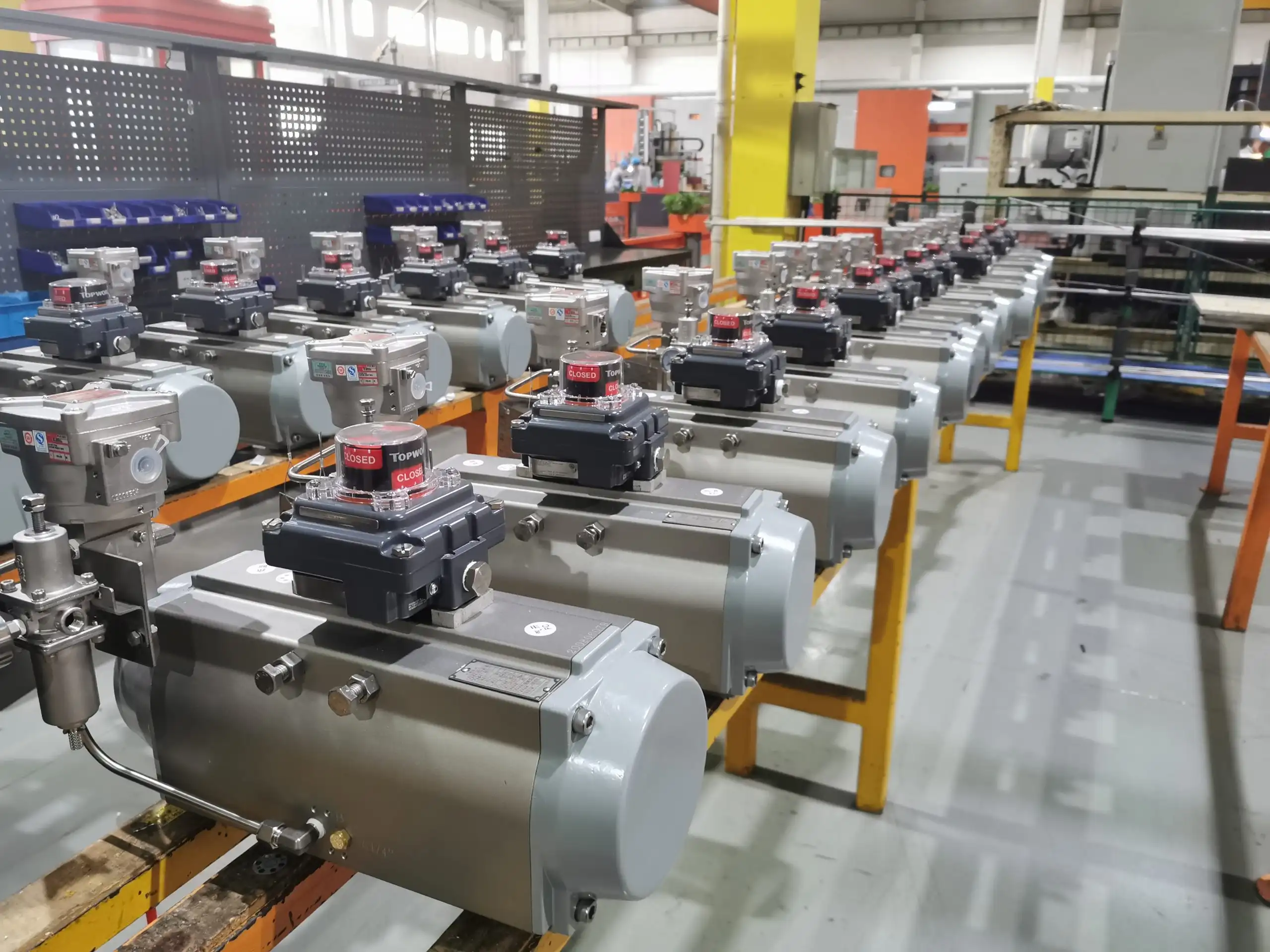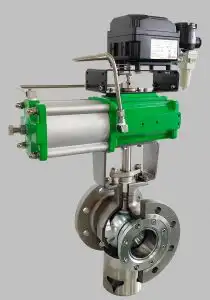How Miwival Ball Valves Improve Performance in Fluid Control Systems

Fluid control systems need accuracy, dependability, and high efficiency. Miwival ball valves are built to meet these tough demands. They use smart design features like full bore setups and floating ball systems. These features cut down flow resistance and stop leaks. This part explains how Miwival’s clever engineering boosts fluid control efficiency in many industries. Benefits include lower energy use and longer system life.
What Are the Main Features of Miwival Ball Valves?
Miwival ball valves work so well because of their careful design and strong materials. Key parts like full port shapes, rust-proof metals, and PTFE soft seats work together. They make the valves last longer and perform better. Below, we look at the design details, tough materials, and sealing tech that make Miwival valves stand out in hard conditions.
Design Traits That Boost Performance
Miwival ball valves are made with precision to work better. Their design includes a full bore or full port setup. This means the valve opening matches the pipe size. This reduces flow resistance and pressure loss, helping fluids move smoothly.
These valves also use a floating ball system. The ball moves freely between seat rings. This design ensures a tight seal and lowers the chance of leaks. Miwival also adds easy-to-use controls like manual levers or chainwheels. These make the valves simple to operate.
Materials Used for Long Life
Durability is a key focus for Miwival ball valves. They are built with top-quality metals like stainless steel, brass, and other alloys that resist rust. For tough jobs, cladding methods are used. Cladding means welding a protective layer onto the metal. This makes the valve stronger against wear and rust.
Such sturdy building lets these valves handle high heat and pressure. They stay strong even after years of use.
Sealing Systems and Their Role in Efficiency
The sealing systems in Miwival ball valves are vital for smooth operation. These valves use soft seats made from PTFE. This material resists chemicals and has low friction. The floating ball works with these seats to create a tight seal, even when pressure changes.
This strong sealing stops leaks and keeps the system reliable.
How Do Miwival Ball Valves Compare to Other Valve Types?
In a market full of valve choices, Miwival ball valves shine. They beat traditional gate and globe valves in many ways. Their quarter-turn operation, small size, and low upkeep save money and time. This section shows how Miwival’s valves are better than old-style options. It highlights their efficiency, space-saving shape, and cost benefits over time.
Benefits Over Gate and Globe Valves
Miwival ball valves have clear advantages over gate and globe valves. Their quarter-turn action lets them open and close fast. This speeds up responses during critical tasks.
Gate valves need many turns to work. Globe valves use a linear motion system. Miwival’s design is simpler.
Their full bore design also cuts flow resistance. Gate valves often cause turbulence because they block flow paths. Globe valves work for throttling but create more pressure drops than ball valves.
Cost Savings and Maintenance Needs
Miwival ball valves save money because they need little upkeep. The strong materials used to build them wear down slowly. This extends their life and cuts replacement costs.
Their simple design also makes them easier to clean and fix compared to globe or butterfly valves.
Why Are Miwival Ball Valves Important in Fluid Control Systems?
Fluid control systems need valves that balance precision, reliability, and energy savings. Miwival ball valves excel here. They reduce pressure drops, optimize flow control, and handle harsh settings. Here, we see their key role in industries like oil and gas, water treatment, and HVAC. In these fields, performance and durability are must-haves.
Better Flow Control and System Trust
Miwival ball valves are key parts of fluid control systems. They adjust flow precisely while keeping the system reliable. Their built-in flow traits ensure steady performance in different conditions. The link between valve capacity and movement is fine-tuned for top results.
Lower Pressure Drops and Energy Use
A big plus of Miwival ball valves is reducing pressure drops in the system. The full bore design cuts blockages in the flow path. Fluids move through with less resistance. This efficiency means less energy is needed to pump fluids.
Uses in Many Industries
Miwival ball valves work in many fields. These include oil and gas, chemical processing, water plants, and HVAC systems. They handle various fluids—like gases and liquids—under different heat and pressure levels.
How Does Miwival Guarantee Quality as a Trusted Ball Valve Supplier?

Miwival’s name as a reliable valve supplier comes from its strict quality rules and focus on customer needs. From ISO certifications to custom options, its tight processes ensure consistency and excellence. This part covers Miwival’s quality checks and industry awards that prove its lead in valve making.
Strict Production Standards
Miwival follows tough production rules by meeting global quality marks like ISO certifications. ISO standards ensure products meet basic global needs for pipeline services. This promise means steady quality across all batches.
Customer-First Approach and Custom Choices
A big reason for Miwival’s success is its customer-first style. The firm offers custom options for specific needs. These include material picks based on the job and special coatings for extra strength.
Certifications and Industry Praise
Miwival’s trust as a top supplier is backed by its certifications and industry praise. These honors show its drive to deliver top-quality products that meet or beat client hopes.
By mixing smart designs with strong materials and tight seals, Miwival ball valves give unbeaten performance in fluid control systems across many fields.
What Are the Best Ways to Install and Maintain Miwival Ball Valves?
Getting the most life and efficiency from Miwival ball valves depends on proper setup and regular care. Whether fixing alignment during install or solving cavitation problems, following best steps is key. Below, we list step-by-step tips for setup, routine care, and fixing common issues.
Right Setup Steps for Top Performance
Putting Miwival ball valves in right is key to their best work. First, check that the valve fits the pipe system in size, pressure rating, and material. The full bore or full port design ensures the valve’s inside width matches the pipe’s. This cuts flow resistance and pressure drops. It helps fluids move smoothly.
During setup, place the valve correctly in the pipe line. For flangeless designs, also called wafer-style valves, use bolts or studs to fix them between flanges. Use strain-hardened bolts and nuts, not all-thread, which can stretch with heat changes. This stops leaks or misalignment from heat growth.
Also, don’t overtighten links. This can harm seals like soft PTFE seats. These seats are key for a tight seal under shifting pressure. If using controls like chainwheels or levers, make sure they’re set for smooth use.
Routine Care Tips for Longer Life
Regular care is vital to extend Miwival ball valves’ life and keep them reliable. Start with frequent checks for wear or rust on the valve body and inside parts. For tough jobs, cladding methods can boost strength by adding wear and rust resistance. Cladding means welding a metal coat to make the part stronger.
Lubrication is another key care step. Use the right oils on moving parts like stems and controls to cut friction and stop issues. For lubricated plug valves, add sealant under outside pressure to help plug spin and sealing.
Clean the valve often to remove dirt or buildup, especially in systems with thick fluids or particles. Take the valve apart if needed, following maker guides to avoid harm to parts like floating balls or soft seats.
Lastly, test for leaks using steps from ANSI Standard B16.104:1976 for valves with a flow coefficient over 0.1 (Cv). These tests set quality rules for making. Fix any leaks fast to stop more damage.
Fixing Common Problems
Solving common Miwival ball valve issues means spotting signs early and acting fast. One common issue is cavitation. This happens in liquid systems when bubbles form and burst inside the valve due to pressure shifts. Cavitation can harm valves and pipes. To stop this, keep working conditions within suggested pressure ranges.
Another issue is choked flow, or critical flow. Here, lowering downstream pressure more won’t raise flow rate as vapor blocks the path. Choked flow happens when, at a set upstream pressure, flow can’t grow by lowering downstream pressure. Fix this by resetting system settings or swapping worn parts.
Leaks around seals or seats may come from wrong setup or wear over time. Check seal surfaces for damage and replace bad parts fast. Also, ensure controls like levers or chainwheels work right without too much force.
For systems in extreme heat or pressure, pick materials with proper cold ratings or rust buffers to stop early failure. The max pressure a valve can take at room heat is its cold rating.
Final Thoughts
Miwival ball valves show top engineering for fluid control systems in many fields. Proper setup steps like aligning and using strain-hardened bolts help them work best. They also cut leak or misalignment risks from heat growth.
Routine care like oiling, cleaning, and leak tests extends their life. It also keeps them working well under tough conditions. Fixing common issues like cavitation or choked flow needs knowing system details and tackling root causes.
FAQs About Miwival Ball Valves
What Makes Miwival Ball Valves Special in the Market?
Miwival ball valves stand out due to their tough build with top materials like stainless steel and brass. They also use advanced making methods like cladding for extra strength. Their floating ball system ensures tight seals even under pressure changes. It also lowers leak risks.
These valves also have a full bore design that cuts flow resistance versus gate or globe valves. Their small size saves space without losing function—making them great for many industrial uses.
Can Miwival Ball Valves Handle High-Pressure Systems?
Yes, Miwival ball valves work in high-pressure systems if they meet the rated specs during picking. Their strong build lets them endure high pressure without breaking down over time.
For extra safety against stress from high-pressure use—including flashing—pick the right materials for the job.
Are Miwival Ball Valves Good for Corrosive Fluids?
Miwival ball valves work well with corrosive fluids. This is thanks to their build from rust-proof alloys and optional coatings from cladding when needed. Corrosion means chemical wear on materials over time.





